Symptoms and Complications
Patients with PK deficiency may present with a range of serious symptoms and complications that, over time, can pose significant risks to daily life1-3
Risks can include iron overload, liver cirrhosis, osteoporosis, and thrombosis due to splenectomy
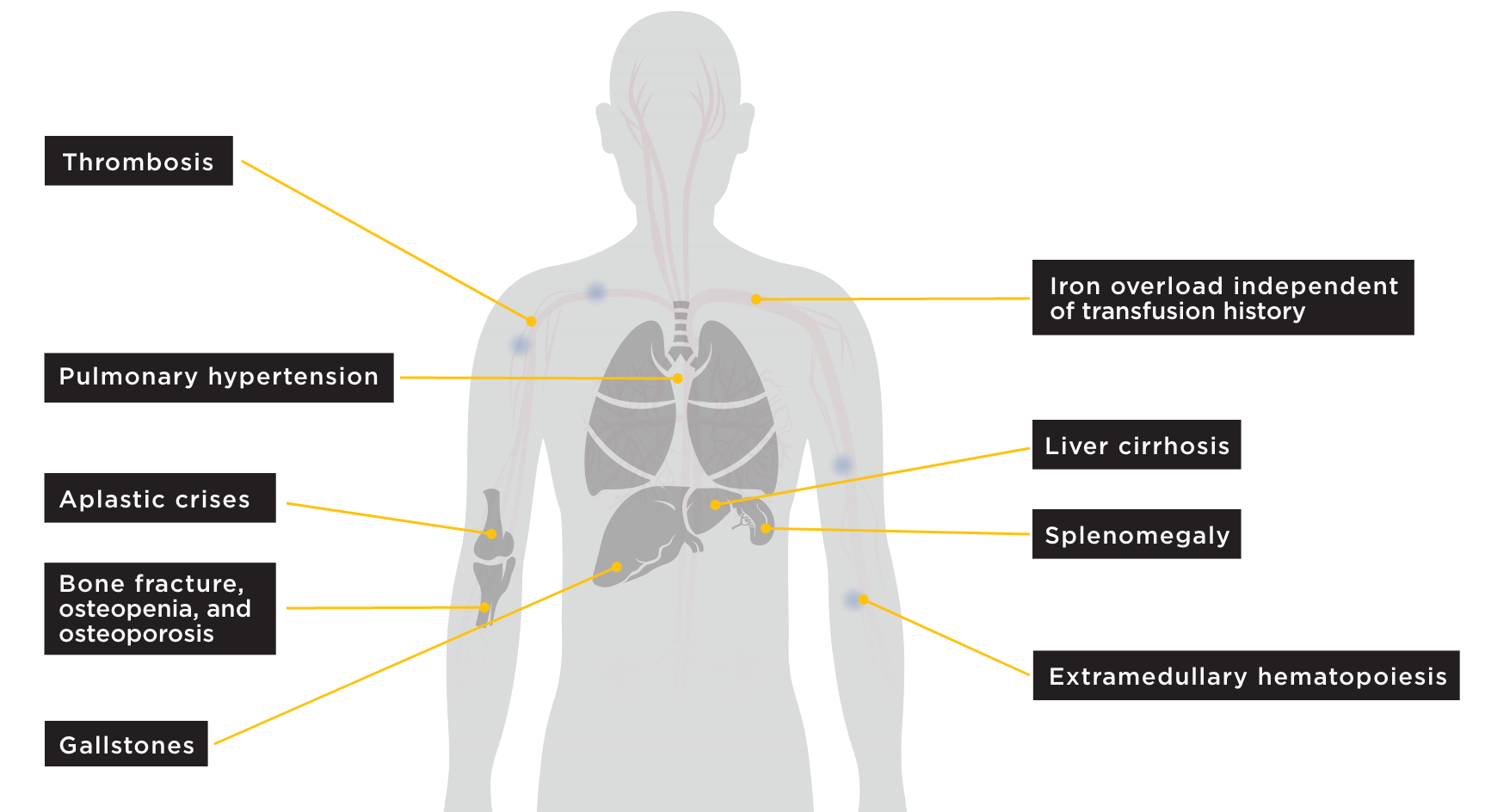
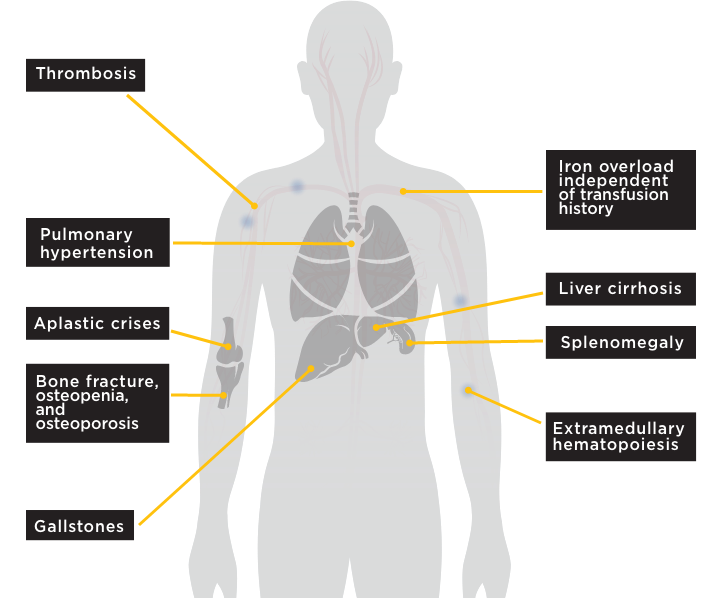
Additional complications can include4:
- Dyspnea
- Jaundice
- Fatigue (can be severe in this population)
- Cognitive difficulties

Understanding the burden of pyruvate kinase (PK) deficiency
PK deficiency experts explain the burden of disease, including complications and approaches to management.
The range and degree of symptoms and complications can pose significant risks, as well as obstacles to daily life4,7
Comorbidities and complications can occur at higher rates than in age- and gender-matched individuals from the general population2
Patients from the general population without hemolytic anemia were matched 10 to 1 to patients with PK deficiency on the basis of age, gender, and year of enrollment in the PK Deficiency Natural History Study (NHS).*
The Pyruvate Kinase Deficiency Natural History Study was funded by Agios Pharmaceuticals.
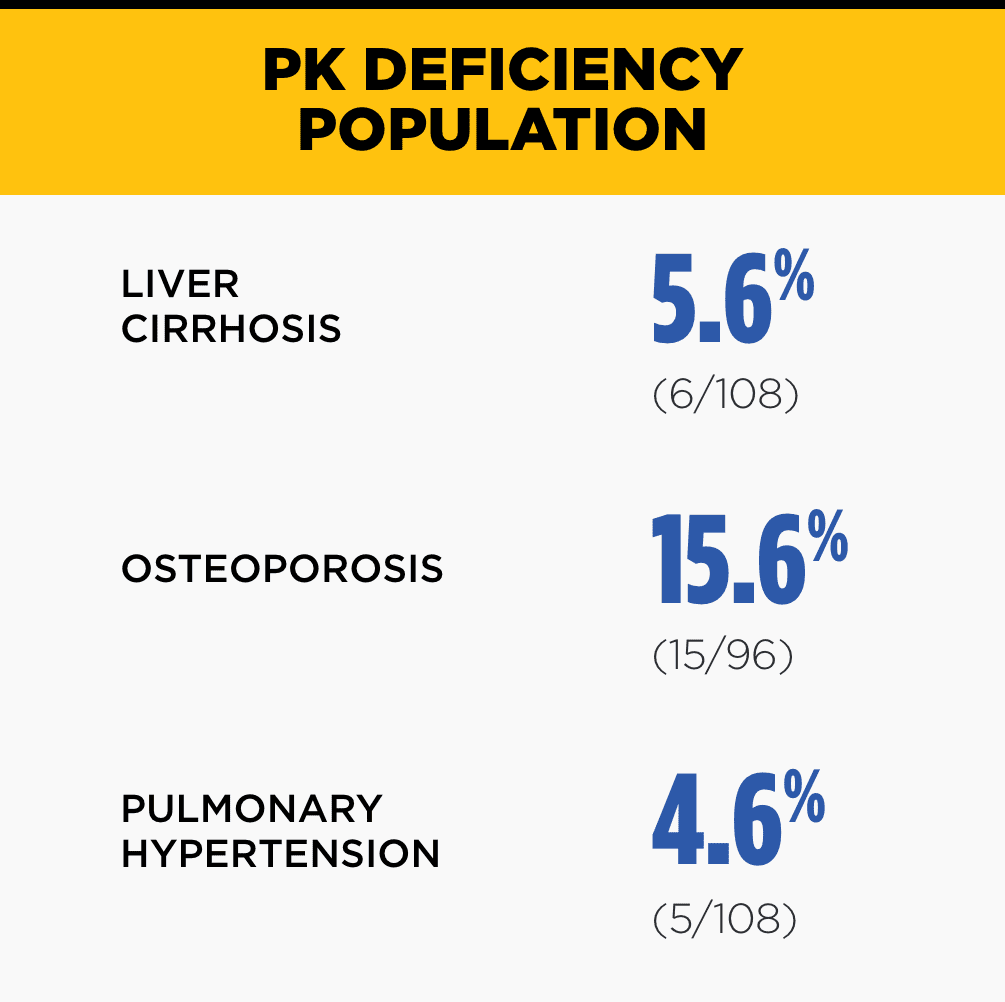
P<0.001.
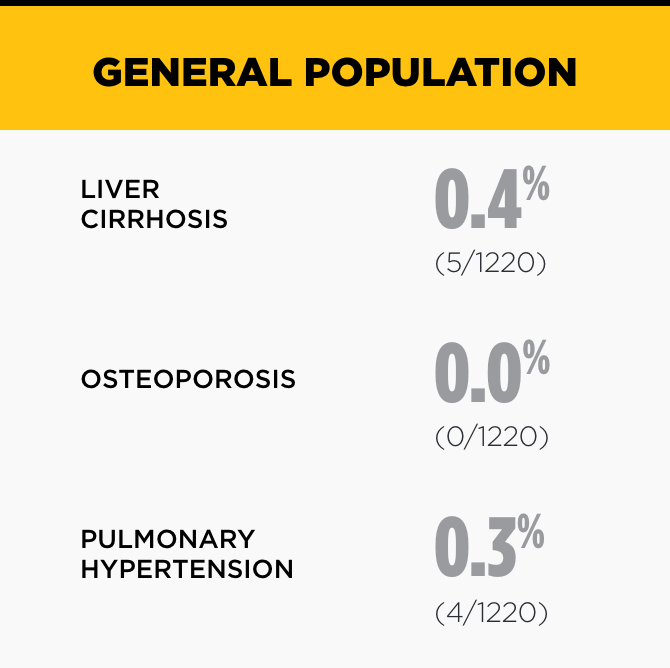
P<0.001.
ERT=ever regularly transfused; NRT=never regularly transfused; NT=never transfused.
*Data derived for the PK deficiency population drawn from the Pyruvate Kinase Deficiency NHS. To contextualize the findings, the frequencies of select conditions were compared with an age- and gender-matched cohort of individuals from the insured, general US population who did not have any hemolytic anemia diagnoses and had ≥5 years of continuous enrollment in the Truven MarketScan administrative claims database. The mean age for patients ERT (n=65) was 34.2 years, NRT (n=30) was 39.5 years, and NT (n=27) was 37.2 years at enrollment.2
The disease has affected my career. I spent 11 years to get a PhD in nutrition…My heart wants more but body can’t handle it.
Tamara S.
Patients with PK deficiency and hemoglobin (Hb) >10 g/dL also experience a wide range of comorbidities and complications8
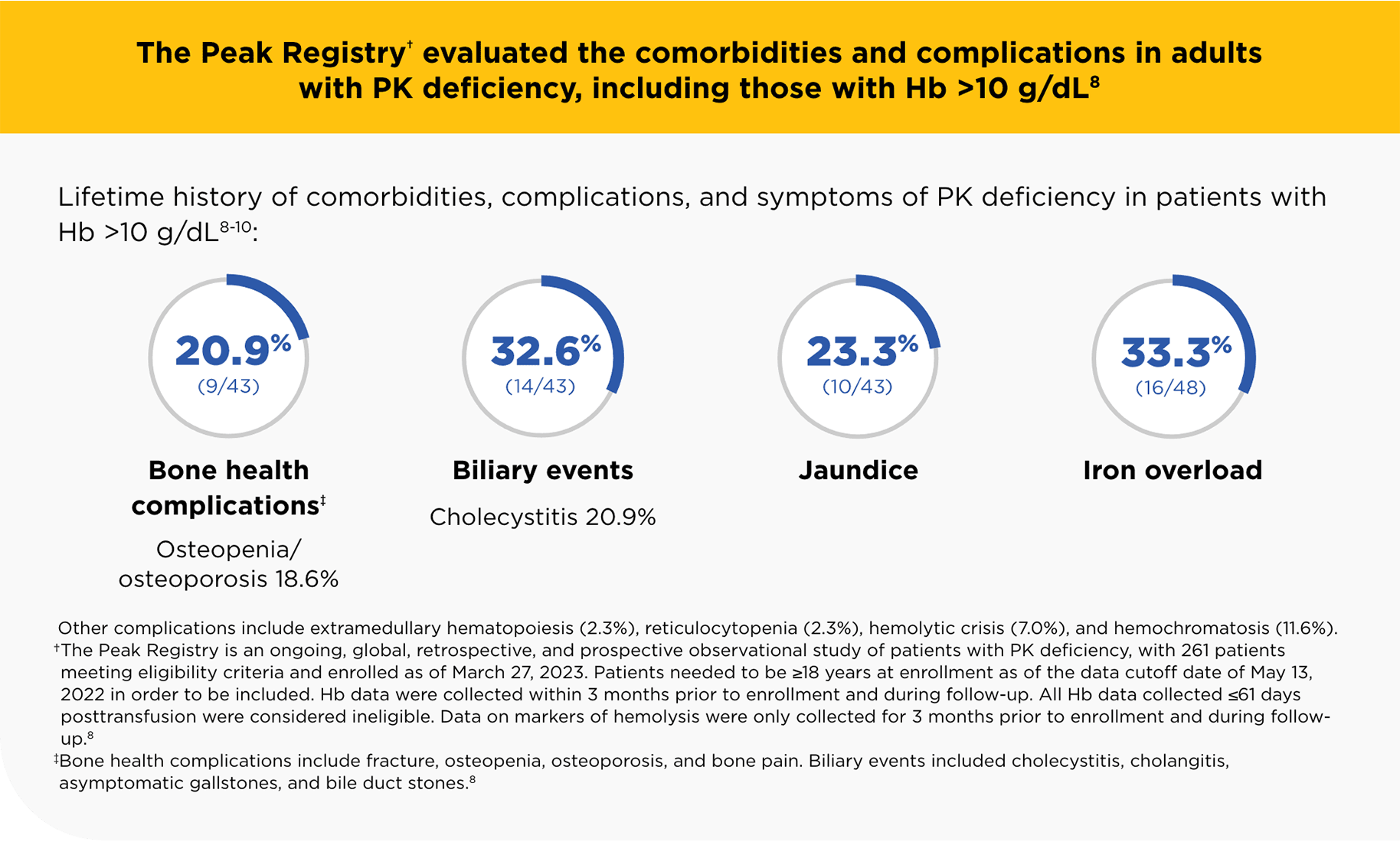

The burdens of PK deficiency are not always outwardly evident, but their impact may be felt across the domains of life4,12
PHYSICAL LIMITATIONS
- Need for additional rest
- Difficulty with exercise/sports
- Difficulty climbing stairs/walking uphill
- Susceptibility to illness
SOCIAL IMPACT
ACTIVITIES OF
DAILY LIVING
- Difficulty with household activities
- Lack of motivation
- Decreased productivity
EMOTIONAL IMPACT
- Concern about the future
- Anxiety and depression
APPEARANCE
- Negative impact on appearance
References: 1. Zanella A, Fermo E, Bianchi P, Valentini G. Red cell pyruvate kinase deficiency: molecular and clinical aspects. Br J Haematol. 2005;130(1):11-25. 2. Boscoe AN, Yan Y, Hedgeman E, et al. Comorbidities and complications in adults with pyruvate kinase deficiency. Eur J Haematol. 2021;106(4):484-492. 3. Grace RF, Bianchi P, van Beers EJ, et al. Clinical spectrum of pyruvate kinase deficiency: data from the Pyruvate Kinase Deficiency Natural History Study. Blood. 2018;131(20):2183-2192. 4. Grace RF, Cohen J, Egan S, et al. The burden of disease in pyruvate kinase deficiency: patients’ perception of the impact on health-related quality of life. Eur J Haematol. 2018;101(6):758-765. 5. Grace RF, Layton DM, Barcellini W. How we manage patients with pyruvate kinase deficiency. Br J Haematol. 2019;184(5):721-734. 6. Al-Samkari H, van Beers EJ, Kuo KHM, et al. The variable manifestations of disease in pyruvate kinase deficiency and their management. Haematologica. 2020;105(9):2229-2239. 7. Grace RF, Zanella A, Neufeld EJ, et al. Erythrocyte pyruvate kinase deficiency: 2015 status report. Am J Hematol. 2015;90(9):825-830. 8. Pospíšilová D, Grace RF, Glenthøj A, et al. Comorbidities and complications in adults with pyruvate kinase deficiency according to hemoglobin strata: a descriptive analysis from the Peak Registry. Presented at: European Hematology Association (EHA) Hybrid Congress; June 8–11, 2023; Frankfurt, Germany, and Virtual. 9. Pospíšilová D, Grace RF, Glenthøj A, et al. Comorbidities and complications in adults with pyruvate kinase deficiency according to hemoglobin strata: a descriptive analysis from the Peak Registry. Abstract presented at: European Hematology Association (EHA) Hybrid Congress; June 8-11, 2023; Frankfurt, Germany, and Virtual. 10. Data on file. Agios Pharmaceuticals, Inc. 11. Bianchi P, Fermo E, Glader B, et al. Addressing the diagnostic gaps in pyruvate kinase deficiency: consensus recommendations on the diagnosis of pyruvate kinase deficiency. Am J Hematol. 2019;94(1):149-161 [supplementary online material]. 12. National Organization for Rare Disorders. Voice of the Patient Report: Pyruvate Kinase Deficiency. Washington, DC: National Organization for Rare Disorders; 2020.